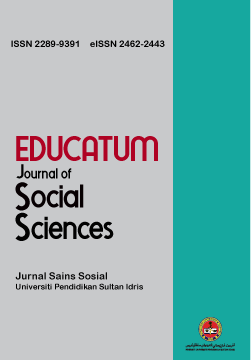Has the world caught on the Responsibility to Protect? Revisiting the Rwandan Genocide 25 years later
DOI:
https://doi.org/10.37134/ejoss.vol6.2.4.2020Keywords:
Rwanda, Responsibility to Protect, human rights, genocide, United NationsAbstract
Twenty-five years after the tragic Rwandan genocide that killed around one million people in 1994, this paper revisited the tragedy by looking into the contemporary narratives on genocide studies. Through a document analysis of the existing discourses regarding the genocide, the authors found that leading scholars in international politics recognized the failure of the international community in the prevention and mitigation of the conflict following the lack of international political will by the United Nations Security Council. They have recognized that each state has the moral responsibility and obligation to protect the human rights of all of humanity. Moreover, following the trend of decreasing global democracy, scholars have also warned us that more mass atrocities may happen with the rise of authoritarian leaders in this current juncture of our history. As such, the responsibility to protect must actively prove its purpose to protect people from torture, slavery, war crimes, and genocide.
Downloads
References
Asia-Pacific Centre for the Responsibility to Protect. (n.d.). What is the Responsibility to Protect? Basic Information. Retrieved from Responsibility to Protect: Basic Information. Retrieved from https://r2pasiapacific.org/files/310/R2P_basic_information_english.pdf.
Bellamy, A. (2009). Responsibility to Protect: The Global Effort to Mass Atrocities. Cambridge: Polity Press.
Bowen, G. A. (2009). Document Analysis as a Qualitative Research Method. Qualitative Research Journal, 9(2), 27-40.
doi: https://10.3316/qrj0902027
Carter, N., Bryant-Lukosius, D., Dicenso, A., Blythe, J., & Neville, A. J. (2014). The Use of Triangulation in Qualitative Research. Oncology Nursing Forum, 41(5), 545-547.
doi: https://10.1188/14.onf.
Corey, A. &Joreiman, S.F. (2004). Retributive justice: The Gacaca courts in Rwanda. African Affairs, 103(410), 73-89. doi: https://10.1093/afraf/adh007.
Dorn, A. W., &Matloff, J. (2000). Preventing the Bloodbath: Could the UN have Predicted and Prevented the Rwandan Genocide ?. Journal of Conflict Studies, 20(1). Retrieved from https://journals.lib.unb.ca/index.php/JCS/article/view/4333.
Fisseha, M. (2012). Responsibility to Protect: Rwanda and International Law. The Scientific Journal for Theory and Practice of Socioeconomic Development, 1, 44-51.
Fusch, P. I., Fusch, G. E., Ness, L. R. (2018). Denzin’s paradigm shift: Revisiting triangulation in qualitative research. The Journal of Social Change, 10(1), 19-32.
doi: https://10.5590/JOSC.2018.10.1.02
Haperen, M. (n.d.). The Rwandan Genocide, 1994. Instituutvooroorlogs-, holocaust- engenocidestudies. Retrieved from https://www.niod.nl/sites/niod.nl/files/Rwandan%20genocide.pdf
Jonsen, K., & Jehn, K. A. (2009). Using triangulation to validate themes in qualitative studies. Qualitative Research in Organizations and Management: An International Journal, 4(2), 123-150. doi: https://10.1108/17465640910978391
Kassner, J. (2014). The Moral Obligation to Intervene in Rwanda. E-International Relations. Retrieved from
https://www.e-ir.info/2014/04/16/the-moral-obligation-to-intervene-in-rwanda/.
Magnarella, P. J. (2005). The Background and Causes of the Genocide in Rwanda. Journal of International Criminal Justice, 3(4), 801-822.
doi: https://10.1093/jicj/mqi059.
Newbury, C. (1995). Background to Genocide: Rwanda. Issue: A Journal of Opinion, 23(2), 12-17.
Nikuze, D. (2014). The Genocide against the Tutsi in Rwanda: Origins, causes, implementation, consequences, and the post-genocide era. International Journal of Development and Sustainability, 3(5), 1086-1098.
Ndahiro, K. (2014). Dehumanisation: How Tutsis were reduced to cockroaches, snakes to be killed. The New Times Rwanda.Retrieved from https://www.newtimes.co.rw/section/read/73836#:~:text=In%20the%20years%20leading%20up,now%20called%20inyenzi%20(cockroach).&text=All%20Tutsi%20men%2C%20women%20and,of%20a%20nation%20but%20cockroaches.
Patton, M.Q. (1999). Enhancing the quality and credibility of qualitative analysis. Health Services Research, 34(5), 1189-1208.
Puddington, A. (2019). A Quarter-Century after Rwanda’s Genocide, Mass Atrocities Continue to Multiply. Freedom House. Retrieved from
Rothbart, D., & Cooley, J. (2016). Hutus Aiding Tutsis during the Rwandan Genocide: Motives, Meanings, and Morals. Genocide Studies and Prevention, 10(2), 76-97.
doi: https://10.5038/1911-9933.10.2.1398.
Sarkin, J. & Fowler, C. (2010) The Responsibility to Protect and the Duty to Prevent Genocide: Lessons to be Learned from the Role of the International Community and the Media During the Rwandan Genocide and the Conflict in the Former Yugoslovia. Suffolk Transitional Law Review, 33(1), 35-86.
Shattuck, J. (2005). The Collective International Responsibility to Protect: The Case of Rwanda. Northwestern Journal of International Human Rights, 4(1), 105-117.
Stanton, G. (1998). The 8 Stages of Genocide. Genocide Watch. Retrieved from http://www.genocidewatch.org/aboutgenocide/8stagesofgenocide.html
Tarr, A. (2015). Arusha Accords: Rwanda [PowerPoint Presentation]. Retrieved from https://dx.doi.org/10.13140/RG.2.1.1122.8887
United Nations. (2018). On Rwandan genocide anniversary, UN leaders ask: Can world muster the will to prevent new atrocities?. Retrieved from
https://news.un.org/en/story/2018/04/1006732.
Winfield, N. (1999). UN Failed Rwanda. Global Policy. Retrieved from https://www.globalpolicy.org/component/content/article/201-rwanda/39240.html#:~:text=United%20Nations%20%2D%20A%20report%20assessing,Rwandan%20people%20when%20they%20most.
Verpoorten, M. (2005). The Death Toll of the Rwandan Genocide: A Detailed Analysis for Gikongoro Province. Population, 60(4), 331-367. doi: 10.3917/popu.504.0401
Verwimp, P. (2017). Peasant Ideology and Genocide in Rwanda Under Habyarimana. Genocide in Cambodia and Rwanda, 1-40.





